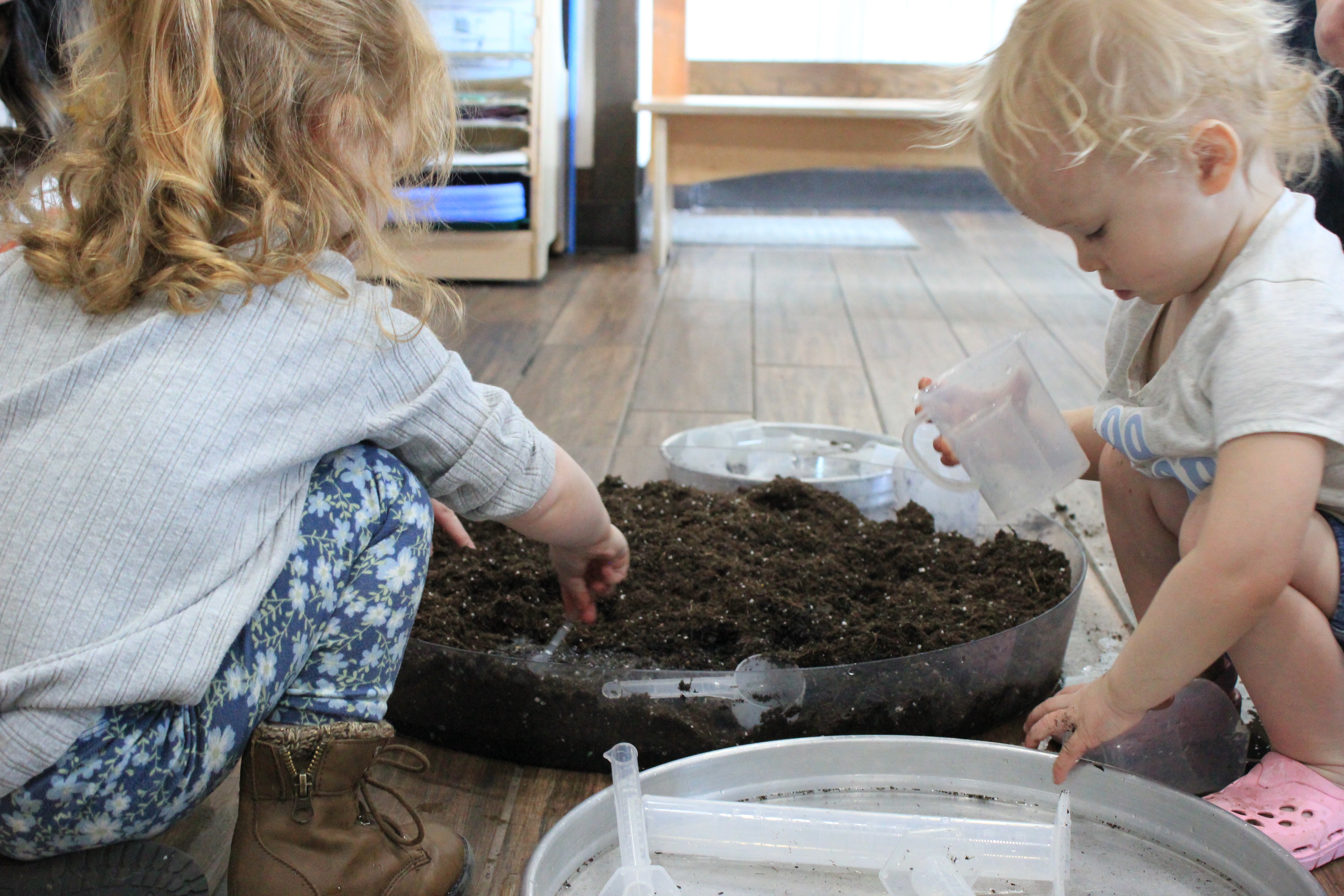Early childhood is the perfect time to spark curiosity about the natural world. By focusing on four key environmental science concepts, Connections, Change, Impact, and Solutions, teachers can create a meaningful environment to guide children to explore how the world works and how they can care for it. Below, we’ll explore what each theme means and which materials bring the concepts to life. With thoughtful design and high-quality materials, teachers can nurture a sense of wonder and stewardship for the environment while supporting key learning outcomes.
Connections: What do living things need? How does the environment support life?
Children are naturally curious about plants, animals, and the world around them. A shelf focused on connections helps children investigate the basic needs of living things: air, water, light, and space. Materials such as seed sprouting trays, magnification blocks, soil samples, and small clear jars of water allow children to see these needs in action. For example, sprouting beans in cotton shows how roots reach for water while leaves stretch toward light. Providing opportunities for close observation reinforces the idea that life is supported by the environment and that we have a role in protecting it.
Change: How do cycles, seasons, and weather affect our world?
Children notice changes daily, whether it’s a puddle drying up or leaves falling from trees. A science shelf designed around change gives them tools to track and interpret these shifts. Items like weather charts, thermometer, Balance, and seasonal nature collections invite children to compare today with yesterday and this season with the last. Rotating materials, spring blossoms, summer shells, autumn leaves, and winter pinecones, keeps the shelf dynamic and emphasizes cycles. By observing patterns, children begin to understand that change is a constant part of the natural world.

Impact: How do human choices shape the environment?
Even young children quickly recognize that people influence the world around them. A shelf dedicated to impact highlights those relationships in concrete ways. Providing a variety of loose parts that change when children interact with them assist in the foundational understanding of impact for early learners. Pairing these loose part materials with conversations around storage, use, and care encourage conversations about conservation, shared spaces, and responsibility.

Solutions: How can we take care of the world?
The final theme turns knowledge into action. A solutions shelf invites children to think creatively about reusing and repairing instead of discarding. Stocking baskets with loose parts and clean, safe reusable materials, such as cardboard tubes, fabric scraps, and jars, encourages children to experiment with giving objects new purposes. Activities like building with reused materials or repairing a broken classroom tool help children see that small changes can add up to big impacts. Making small intentional choices provides practical solutions for children to support the health of the environment. Choosing versatile multi-use tools models sustainability. By investing in high-quality, open-ended materials, teachers reduce reliance on mass-produced plastic toys that often end up in landfills. Multi-use tools teach children that fewer, well-designed tools can create richer learning experiences.


Share:
Building Stronger Connections Between School and Home